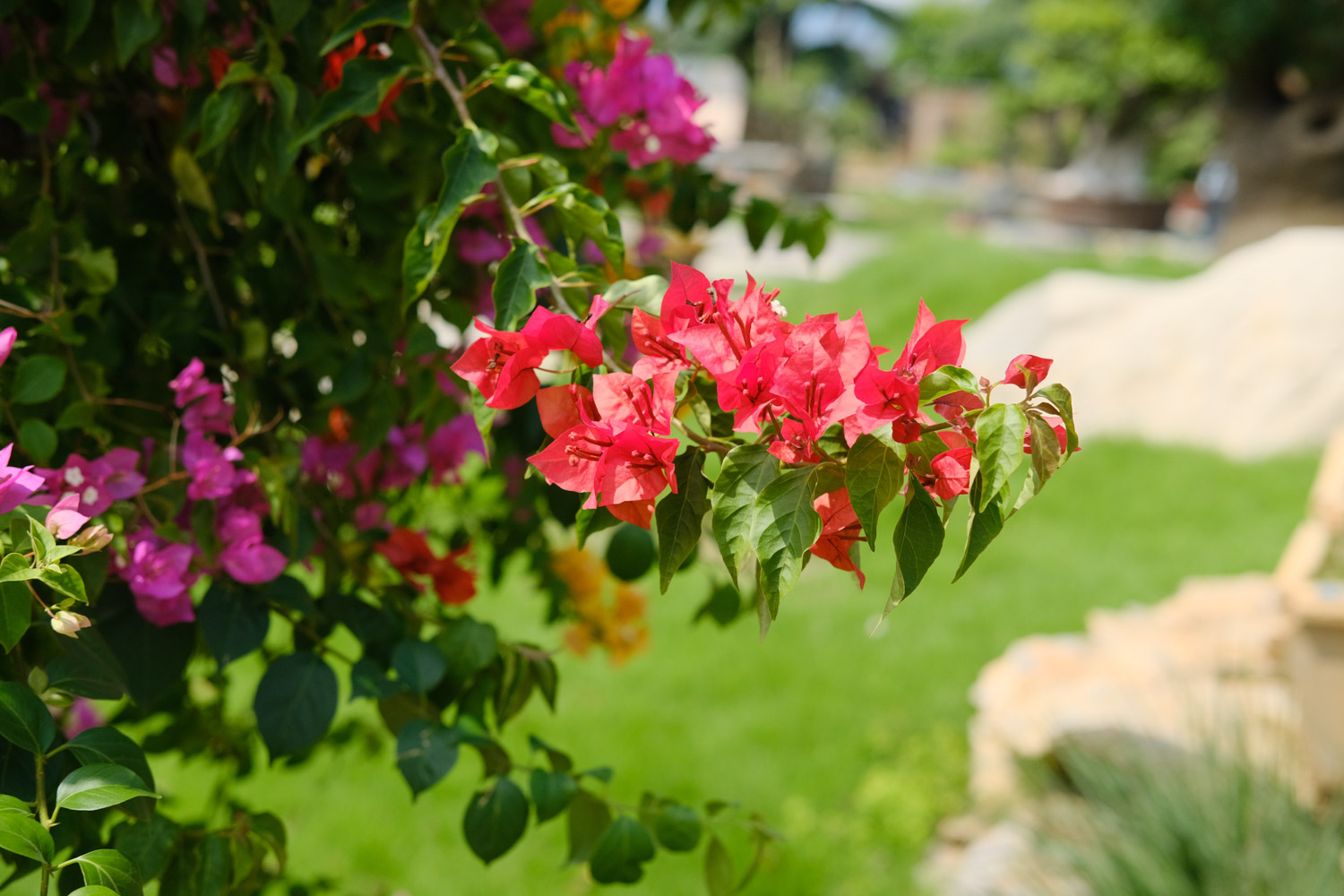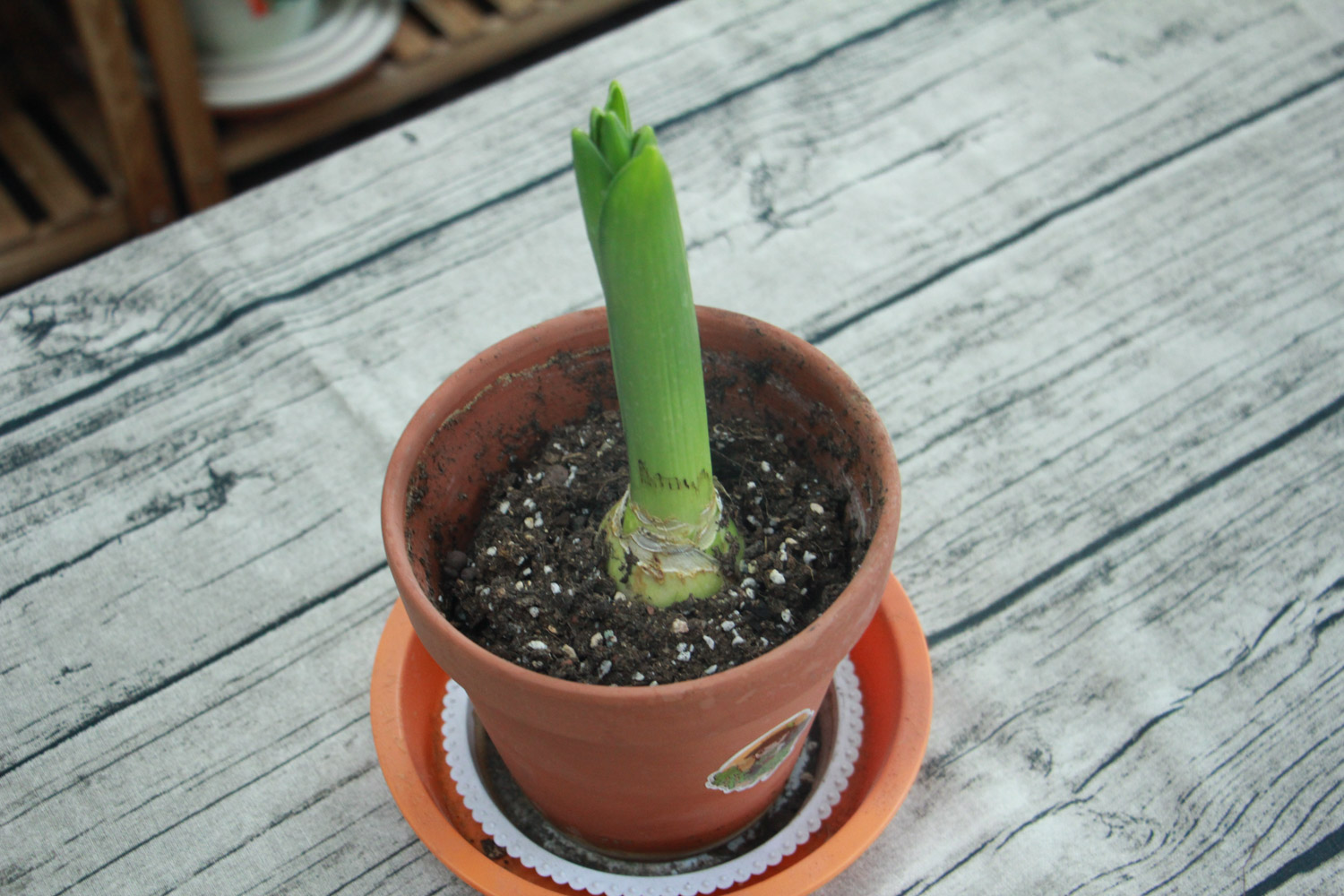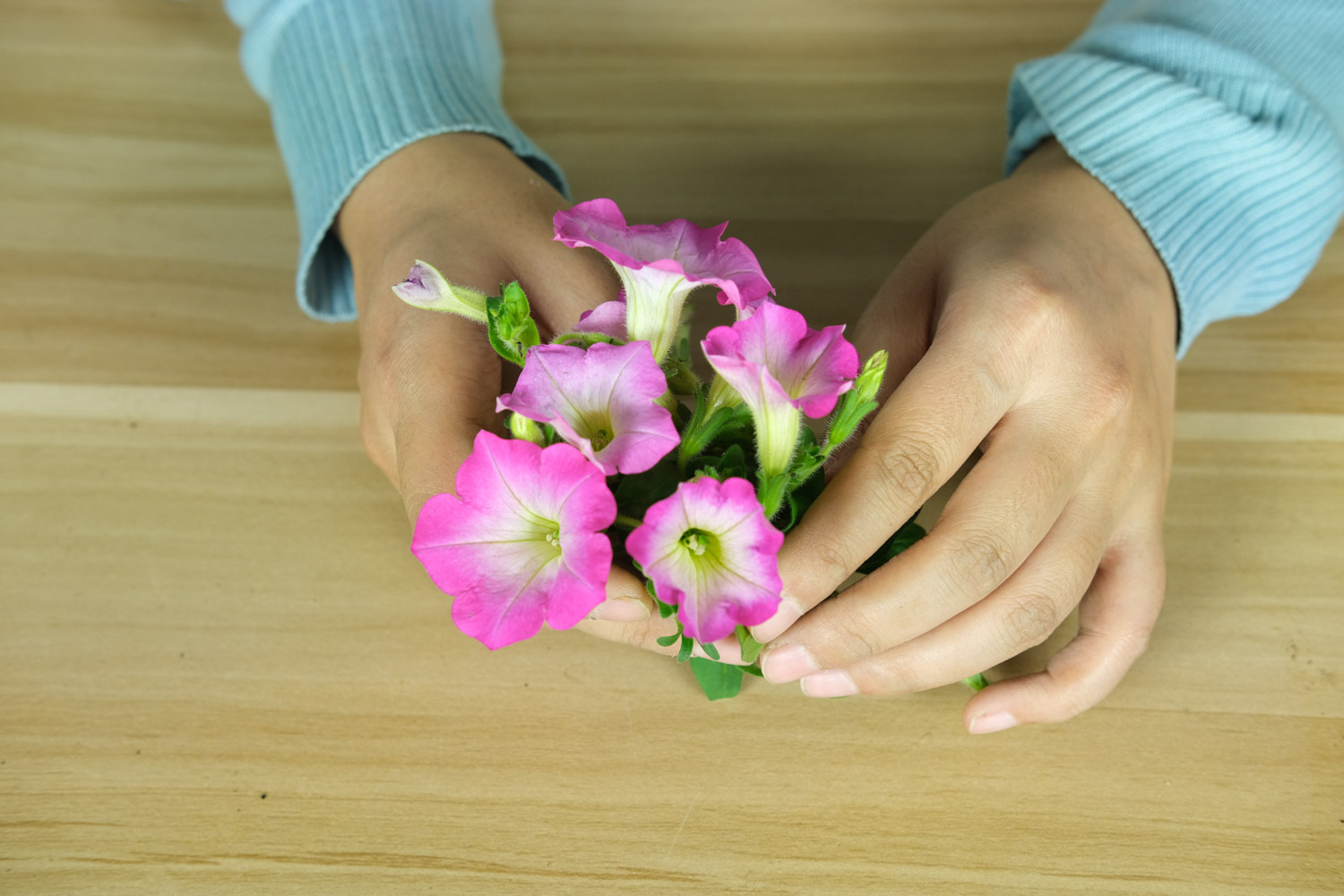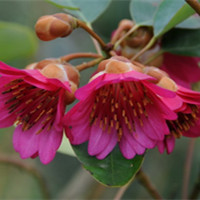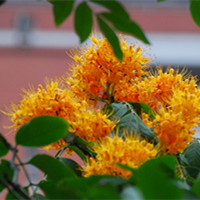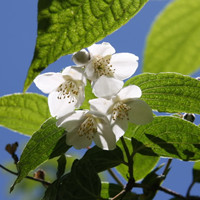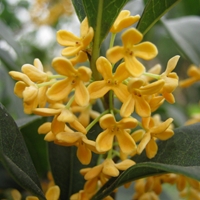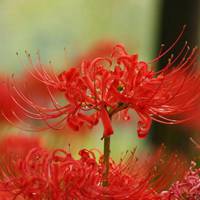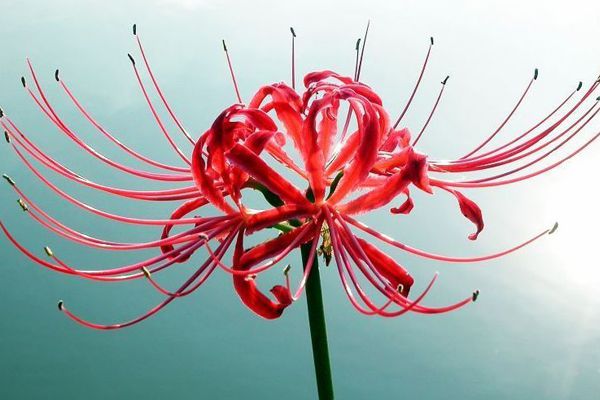
Another name of the other shore flower
Wuyi grass, dragon claw flower, ghost fire, ghost flower, hell flower, Shezi flower, mountain black poison, flower of life and death, flower without leaves, ghost umbrella, soul attracting flower, connecting flower, forgetting Sichuan flower, Lycoris, safflower Lycoris, etc
Morphological characteristics
The other shore flower is a perennial herbaceous flower of Lycoris family. Flowers are like dragon claws. Bulbous, shaped like an onion; The leaves are tufted, slender and pointed, like garlic leaves, fleshy, banded, green and white; Calyx solitary, terminal umbel. At the turn of summer and autumn, the flower stems break through the earth, with umbels at the top. There are 5 to 7 flowers, which are red and strange (there are white varieties in addition to red), and the petals roll back like dragon claws. First blossom and then grow leaves. Leaves don't fall in winter and fall dormant in summer. Because the flowers and leaves can not meet, Lycoris is also known as the "heartless" flower. The three days before and after the spring equinox are called the other side of spring, and the three days before and after the autumn equinox are called the other side of autumn. The other shore flowers bloom on the other side of the autumn. They are very punctual, so they are called the other shore flowers
Life habits of the other shore flower
The wild variety of the other shore flower grows in the gloomy tidal wetland (tomb or country path), and its habitat is red soil, so it has strong cold resistance, likes shade, and can tolerate the high temperature limit of 24 ℃ per day; It likes moist and drought resistant, and is used to acidic soil. Loose and fertile humus soil is the best. It has the habit of dormancy in summer and is very easy to reproduce. Usually, a Lycoris is very easy to develop into a piece of Lycoris
Legend of flower language on the other bank
In Japan, the three days before and after the autumnal equinox are called the other side of autumn, which is the day when the Japanese go to the grave. The other shore flowers bloom on the other side of the autumn. They are very punctual, so they are called the other shore flowers. The flower language of the other shore flowers is a sad memory
The other shore flower is a flower that volunteered to go to hell. It was sent back by the demons, but it still lingered on the yellow spring road. The demons couldn't bear it, so they agreed to let her open on this road to give guidance and comfort to the souls who left the human world. There is no blood peach, and the color is red, red and red. There is no blood peach, and there is no blood peach. The color is red and red. Hell devil love among hell girls likes this kind of flower. Its flower language is the tenderness of the devil
Snow white and blood red flowers on the other side together represent death. It is said that Datura is in full bloom on the road to heaven, and manzhushahua is full of the road to hell. A flower language of Datura is "letter from heaven", and a flower language of manzhushahua is "call of hell". Both represent death, but one is inclined to another explanation of death: rebirth, and the other is inclined to the hesitation and hesitation of pain and regret: degeneration. So there is only a thin line between hell and heaven. The difference between angels and demons is just the meaning of color and burden
The function of the other shore flower
Lycoris sativus is a common garden ornamental plant in East Asia. Enjoy its leaves in winter and flowers in autumn. This flower is mostly used in villa gardens. Generally, hundreds of flowers are planted together. It will open in large numbers in autumn, with excellent landscape effect
Although Lycoris radiata is highly ornamental, its rhizome is poisonous. Its bulb contains alkaloid likeline poison, which can cause vomiting, spasm and other symptoms, and has a significant impact on the central nervous system. It can not be eaten at will, but it can be used for sedation, inhibition of drug metabolism and anticancer effect. Although toxic, bulbous roots can be eaten after treatment and can also be used as medicinal materials. Galantamine extracted from the rhizome of Lycoris can be used to treat polio. It has been used abroad, and Chinese experts are also carrying out in-depth research
Medicinal bulbs contain a variety of alkaloids, such as lycorine, lycolamine, galantamine and so on. It has the functions of dispelling wind, detumescence, detoxification and anticancer. It is used to treat gastric cancer, esophageal cancer and liver cancer, and try to treat lung cancer, ovarian cancer, cervical cancer and lymphatic cancer


